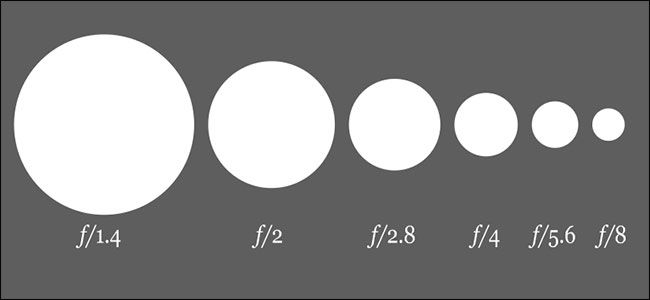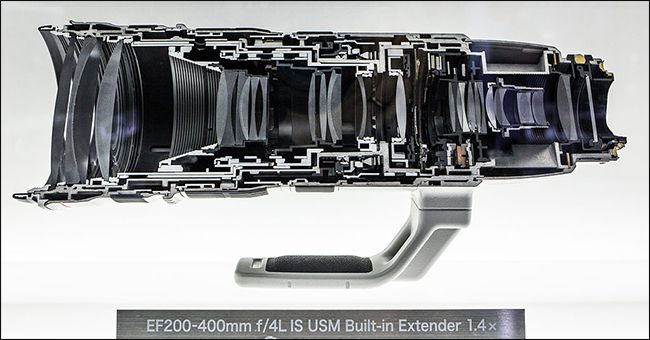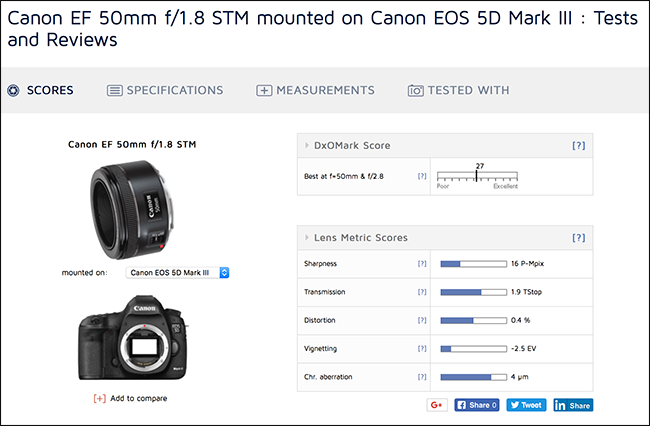Quick Links
If you start to move from photography into videography, you’ll quickly start hearing about something called a t-stop, which are a combination of a lens' f-stop and light transmittance value. Let’s take a deeper look at what that means.
What is An F-Stop?
In photography, an aperture is the hole in a lens that lets light into your camera. How much light your camera captures is measured by a combination of how long the shutter allows light through that aperture, and how big the aperture is. The aperture is measured in f-stops, and the number of each f-stop corresponds to the focal length of the lens divided by the diameter of the aperture. So, for example, a 50mm lens at f/2.0 has an aperture diameter of 25mm; a 100mm lens at f/2.0 has an aperture diameter of 50mm.
Whichever lens you use, f/2.0 will produce roughly the same exposure with the same shutter speed and ISO regardless of focal length, due to the inverse square law and the reduced field of view of the lens at longer focal lengths. A longer lens gathers more of the light from a smaller area while a shorter lens gather less of the light from a greater area. The result is that both gather the same amount of light.
You’ll note, however, I’ve been using the terms “roughly” and “about”. That’s because, while the physics remain the same, how each lens is constructed is different. And this is important for videography.
What is Light Transmission in a Lens?
Lenses—as we’ve covered before—aren’t perfect transmitters of light. The different lens elements affect the light as it passes through, and one of their effects is to reduce the light. The elements in most lenses absorb (or deflect or otherwise waste) 10-40% of the light that’s passing through. This means that they only transmit 60-90% of the light that hits their front element.
The thing is, different lenses transmit different amount of light through the lens. A 50mm f/2.0 lens might have a lens transmittance of 70% while the 100mm f/2.0 lens might have a lens transmittance of 80%. This means that more light is going to hit the sensor if you use the 100mm lens and you’ll have a marginally brighter photo or video.
So, What Is A T-Stop?
A t-stops is the combination of both the f-stop and the light transmittance value of a lens. The t-stop value equals the f-stop value divided by the square root of the lens transmittance. Let’s use our two fictional lenses again:
- The 50mm f/2.0 lens with a lens transmittance of 70% has a t-stop of ~2.4 (2.0/√0.7=2.39).
- The 100mm f/2.0 lens with a lens transmittance of 80% has a t-stop of ~2.24 (2.0/√0.8=2.236).
While two different lenses at the same f-stop might have slightly different exposures, two lenses at the same t-stop won’t. So why does this matter?
Why T-Stops Matter to Videographers But Not Photographers
For photography, t-stops really aren’t that important. The difference in exposure values between any two lenses isn’t going to be more than half a stop or so. This is nothing that the autoexposure in your camera or ten seconds in post can’t fix.
For videography, however, things are different. When you’re shooting video, you don’t have the same flexibility with your shutter speed as you do with photography. You have to think about what the frame rate of the final video will be, so you can’t just rely on shutter speed to control your exposure. For photos, it rarely matters whether your shutter speed is 1/60th of a second or 1/90th of a second, but if you’re shooting a video, a change like that can have a material impact on how the footage looks at the end.
Also, when you’re shooting video, you are much more likely to need to change lenses and still have everything exposed the same way. Imagine a scene opens on a wide shot filmed with a 35mm lens, and then moves to close-ups shot with a 100mm lens. For the transition between the lenses to look seamless, you need them to produce a video with as similar an exposure as possible. If you’re using lenses set to the same t-stop, it will, whereas if you’re using lenses set to the same f-stop, it might not. You rarely have this pressing need to match exposures in photography.
Finding the T-Stop Value of Your Lenses
Lenses designed specifically for videography come with t-stops marked on the lens instead of f-stops. This doesn’t mean you can’t use photography lenses to make videos, it just means you need to do a little bit of research and math to figure out the t-stop.
DxOMark is a company that tests pretty much every lens from every major manufacturer, and one of the things they measure is light transmittance.
Head to DxOMark and find the lens you’re looking to use. Here are the details for Canon’s EF 50mm f/1.8 STM, which is very popular with amateur filmmakers.
While it has an f-stop of f/1.8, it has a t-stop of t/1.9. With a little bit of math, it’s simple to work out that it has a transmittance value of ~0.9 ([1.8/1.9]^2=0.897). This means we can calculate the equivalent t-value for any f-value. For example, at f/11, you get ~t/11.6; at f/16, it’s ~t/16.87. You can then use this information to match up your lenses when you’re shooting video.
F-stops work great for photography, where you can get away with things being a bit looser. For videography, however, you often need to be a lot more exact, and that’s where t-stops come in.
Image Credit: ShareGrid via Unsplash, GodeNehler and Cbuckley via Wikipedia.




